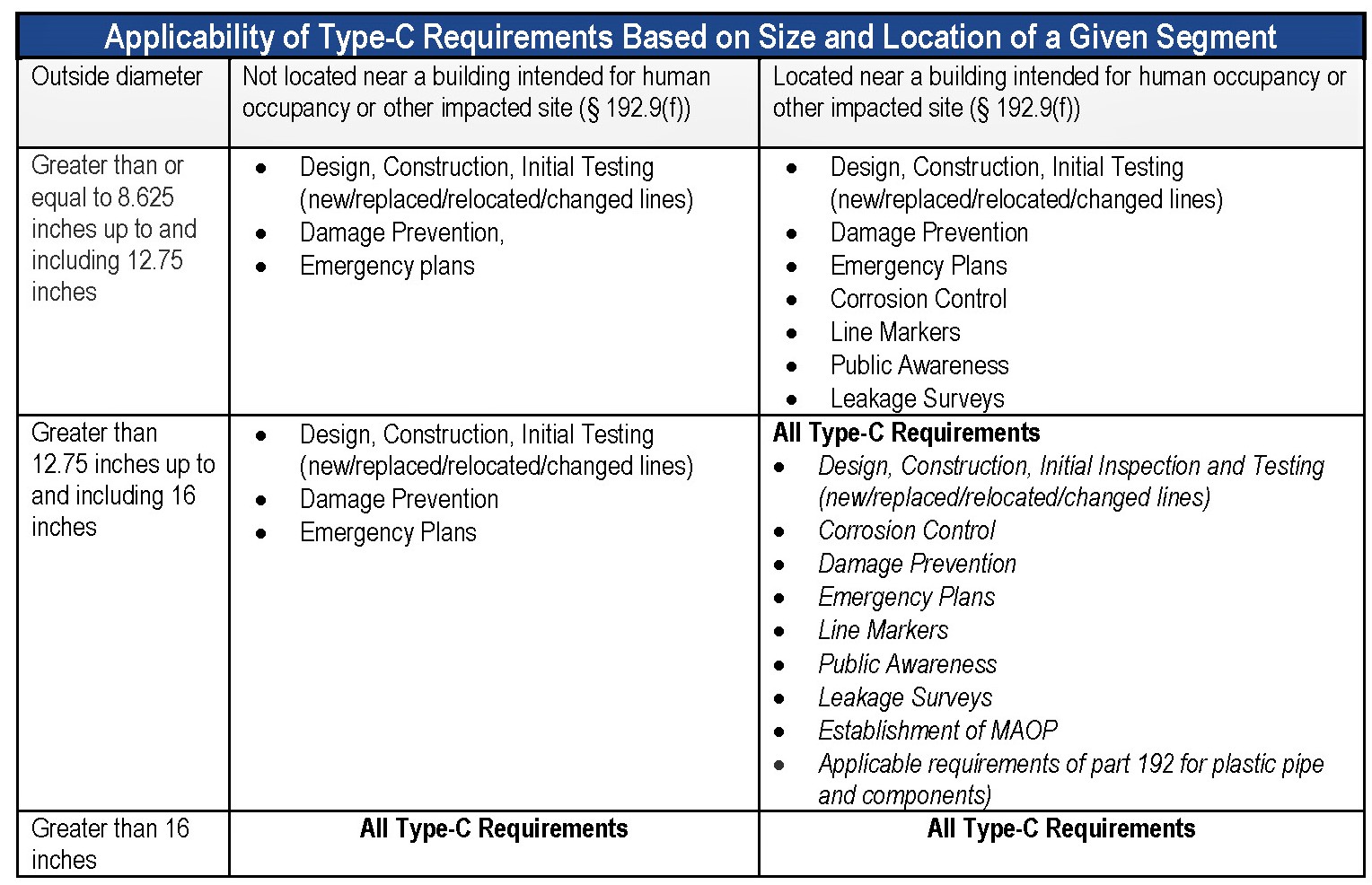Industry PHMSA Regulatory Update
Pipeline Safety: Safety of Gas Gathering Pipelines: Extension of Reporting Requirements, Regulation of Large, High-Pressure Lines, and Other Related Amendments

If not aware, the U.S. Department of Transportation’s Pipeline and Hazardous Materials Safety Administration ("PHMSA") issued a final rule expanding federal oversight, 86 FR 63266, which extends reporting requirements to all gas gathering operators and applies a set of minimum safety requirements to certain gas gathering pipelines with large diameters and high operating pressures. The rule does not affect offshore gas gathering pipelines. PHMSA estimates that at least 425,000 miles of onshore gas gathering lines have not been subject to PHMSA oversight and will now be covered. (Link to the rule here.)
What has changed?
First, it requires all onshore gas gathering lines operators to report safety incidents and file annual reports with PHMSA. The new rule also subjects previously unregulated gathering lines in rural areas to federal minimum safety standards by establishing a new category of regulated gathering lines, discussed below.
Key compliance dates:
- The rule goes into effect on May 16, 2022
- New reporting timeframes:
- Incident Reports: start reporting events occurring after May 16, 2022
- Annual Reports: 2022 reports due March 2023
- Identification (including start and endpoints) of Type-C Lines: November 16, 2022
- Section 192.9 Compliance (a jurisdictional review of the system): May 16, 2023
- Maximum allowable operating pressure ("MAOP") lookback: 5-year period ending May 16, 2023

Operators must also comply with the requirement to document the methodology used in determining the beginning and endpoints of onshore gas gathering within six months of the effective date. Operators of Type-C lines must comply with the applicable requirements in Part 192 within 12 months of the effective date. As with most regulations, PHMSA wants to ensure a sound process is used. Operators may request alternatives to these compliance deadlines by submitting a notice to PHMSA that details measures that will be taken and other relevant facts at least 90 days in advance. Then they may proceed with their proposed alternative deadline if they receive a no objection letter from PHMSA or if PHMSA has not replied within 90 days of submitting the notification.
On an important note, the new rule sets a ten-mile limitation on the use of “incidental” gathering on new, replaced, relocated, or otherwise changed gathering lines, which differs from the new definition of the incidental gathering found in the second edition of API RP, which imposed a 20-mile distance limitation.
New pipeline categories:
PHMSA’s new rule creates two (2) new categories of regulated gas gathering lines, Type-R and Type-C.
Type-R gathering lines are those that have an outside diameter less than 8.625 inches or operate below the pressure or stress level criteria noted below and did not have to comply with any Part 192 requirements and are subject only to the incident and annual reporting under Part 191.
The new annual report (DOT Form PHMSA F 7100.2-3) and incident report forms for Type-R gathering lines address:
- Requiring incident location information that is equivalent to what is required for regulated gas gathering lines;
- Annual report fields appropriate for identifying and evaluating public safety and environmental risks that may be associated with unregulated gas gathering lines, including:
- Miles by the decade of installation,
- Miles by pipeline diameter,
- Miles by pipe material and corrosion protection status, and
- The number of leaks that were repaired or scheduled for repair.
- On the Type-R annual report form, allow reporting of an unknown decade of installation.
- On the Type-R incident report form, allow reporting of an unknown date of installation and certain fields related to pipeline material properties and damage prevention investigations.
Type-C gathering lines are defined as gas gathering lines in Class 1 locations:
- location is an onshore pipeline that has 10 or fewer buildings intended for human occupancy within a 1-mile-long class-location unit (full definition includes the word offshore pipelines, but the rule itself says these aren’t covered, and pertains to just onshore pipelines); or
- are 8.625 inches or greater in diameter and are metallic, with an MAOP producing a hoop stress of 20 percent or more of specified minimum yield strength ("SMYS"), or metallic, with an MAOP greater than 125 psig if the hoop stress is unknown, or non-metallic, with an MAOP greater than 125 psig.
- Type-C gathering lines are subject to certain parts of Part 191 reporting and registration requirements, and parts of Part 192 safety standards.

Ultimately, PHMSA’s critical accomplishments with the new rule are to subject all gas gathering lines, including previously unregulated lines, to annual and incident reporting requirements as well as capture previously unregulated gathering pipelines (SMYS >20%) and now make them subject to safety standards. The rule also limits the use of the incidental gathering line exceptions to lines 10 miles or less.
Moving forward, operators need to identify the start and endpoints of their systems to determine regulated lines – jurisdictional analysis to determine pipeline applicability. Once applicable pipelines are determined develop a plan forward to address the new regulatory requirements.
About the Author
 John Carroll III
John Carroll III
John leads Witt O’Brien’s in-house permitting and compliance planning programs, including training, development and final deliverables. He also manages their soil, air and water monitoring and testing programs.
